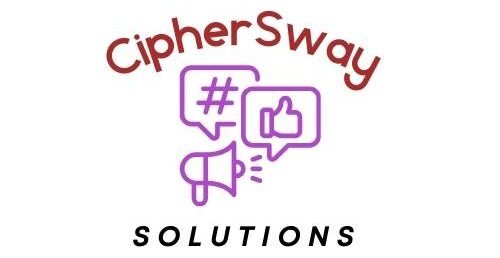Imagine you’re looking for a way to gain valuable insights into your target market without the hefty price tag of traditional methods. Enter social media, an invaluable tool at your fingertips. In this article, “How Can You Use Social Media To Conduct Market Research?” you’ll discover practical strategies for leveraging platforms like Facebook, Twitter, and LinkedIn to gather meaningful data and understand your audience better. From identifying trends to engaging directly with customers, you’ll learn how to turn likes, shares, and comments into actionable business intelligence.
How Can You Use Social Media to Conduct Market Research?
Have you ever wondered how brands always seem to know what their customers want, even before they do? The secret often lies in effective market research, and in today’s digital age, social media provides a treasure trove of data and insights for doing just that. But how exactly can you leverage social media platforms to understand your market better?
Why Use Social Media for Market Research?
Using social media for market research offers a variety of benefits that traditional methods simply can’t match. It’s immediate, cost-effective, and can provide a wealth of information straight from the source—your customers.
Real-Time Insights
Social media platforms allow you to gather immediate, real-time insights. This can include customer opinions, emerging trends, and feedback on new products or services. Unlike traditional surveys or focus groups, you don’t have to wait weeks for results.
Cost-Effective
Conducting market research through social media can be significantly more cost-effective than traditional methods. Instead of investing large sums in professional surveys or market analysis reports, you can gather useful data using built-in analytics tools available on most social platforms.
Direct Customer Feedback
Social media breaks down the barriers between you and your customers. This direct line of communication allows you to gather honest feedback and understand the needs and pain points of your audience better.
Platforms You Can Use
Different social media platforms offer unique features and audiences, making them suitable for various types of market research.
Facebook is a powerhouse when it comes to market research. With its vast user base and comprehensive advertising tools, you can easily target and analyze different segments of the market.
Twitter is known for its real-time nature, making it excellent for understanding current trends and public opinion. The use of hashtags can help you track conversations and gather sentiment analysis.
Instagram is invaluable for visual market research. You can see how users engage with visual content and what types of images, videos, and stories resonate most with your audience.
LinkedIn is the go-to platform for B2B market research. It’s a professional network where you can gather insights into industry trends, company strategies, and professional opinions.
YouTube
YouTube provides a unique opportunity to gather insights through video content. Comments and engagement metrics can give you a good idea of what your audience likes or dislikes.

Methods for Conducting Market Research
Now that you know why and where you should conduct social media market research, let’s dive into the how. Several methods can help you extract valuable insights from your social media presence.
Surveys and Polls
One of the simplest ways to gather direct feedback from your audience is through surveys and polls. Most social media platforms have built-in tools that allow you to create quick, engaging surveys.
Example
Suppose you’re considering launching a new product. You could create a poll on Facebook or Instagram asking your audience what features they would find most useful. This direct input can guide your product development and marketing strategies.
Social Listening
Social listening involves monitoring social media channels for mentions of your brand, competitors, and related keywords. This helps you analyze how people are talking about your industry and identify emerging trends or concerns.
Tools for Social Listening
| Tool | Description |
|---|---|
| Hootsuite | Offers comprehensive social listening and analytics. |
| Sprout Social | Provides in-depth monitoring and reporting features. |
| Mention | Helps track brand mentions across various platforms. |
Content Analysis
By analyzing the type of content that gets the most engagement, you can gain insights into what resonates with your audience. Look at likes, shares, comments, and views to identify the kind of content your followers prefer.
Content Metrics
| Metric | Significance |
|---|---|
| Likes | Measures general approval and interest. |
| Shares | Indicates the value and relevance of your content. |
| Comments | Provides direct feedback and engagement. |
| Views | Shows how many people are exposed to your content. |
Competitor Analysis
Keeping an eye on your competitors’ social media activities can offer valuable insights. Look at what types of posts they publish, how they interact with their audience, and which campaigns are most effective.
Example
If a competitor launches a successful campaign, analyze its structure and elements. What was the core message? What type of media was used? How did their audience react? Answering these questions can help you refine your own strategies.
Sentiment Analysis
Sentiment analysis involves assessing the emotional tone of social media mentions. This can provide a snapshot of public opinion and highlight potential issues or opportunities.
Tools for Sentiment Analysis
| Tool | Description |
|---|---|
| Brandwatch | Offers AI-driven sentiment analysis. |
| NetBase | Provides real-time analytics and sentiment tracking. |
| Lexalytics | Specializes in text and sentiment analysis. |
Influencer Collaboration
Collaborating with influencers can extend your reach and provide deeper insights into your target market. Influencers often have a loyal following that trusts their recommendations, making them valuable partners for market research.
Finding the Right Influencers
| Platform | Features |
|---|---|
| Upfluence | Helps identify and engage with relevant influencers. |
| AspireIQ | Provides tools for influencer discovery and management. |
| BuzzSumo | Allows you to find top influencers within your niche. |
Practical Steps for Effective Social Media Market Research
To get the most out of social media for market research, follow these practical steps:
Define Your Objectives
Before diving into data collection, it’s crucial to define what you aim to achieve. Are you looking to understand customer preferences, gauge market trends, or assess the effectiveness of a new campaign? Being clear about your objectives will guide your research efforts and make your findings more actionable.
Choose the Right Platforms
Different platforms offer different types of data and insights. Choose the ones that best align with your research objectives. If you’re targeting a young, visually-driven audience, Instagram may be the best choice. For B2B insights, LinkedIn is more appropriate.
Use Analytics Tools
Most social media platforms offer built-in analytics tools that can provide a wealth of information. Facebook Insights, Twitter Analytics, and Instagram Insights are examples of tools that can help you track engagement, follower demographics, and more.
Example
Facebook Insights allows you to see which type of content performs best and what times your audience is most active. Use this information to adjust your posting schedule and content strategy.
Create and Distribute Surveys
Crafting short, engaging surveys can yield high response rates. Make sure to ask clear, concise questions that are easy to answer. You can distribute them through posts, stories, or even direct messages.
Example Questions
- What features do you value most in our products?
- How do you typically use our services?
- What improvements or new features would you like to see?
Analyze Engagement Metrics
Look beyond just likes and shares; delve into comments and direct messages to understand the sentiment behind the engagement. Qualitative feedback can often provide context that quantitative metrics cannot.
Monitor Trends and Hashtags
Use tools like Trendwatchers and TrackMyHashtag to keep an eye on trending topics and hashtags relevant to your industry. This can help you stay ahead of market trends and identify potential areas for innovation.

Challenges and Solutions
Conducting market research through social media is not without its challenges. However, being aware of these obstacles can help you navigate them more effectively.
Data Overload
The sheer amount of data available on social media can be overwhelming. Focus on the metrics and insights most relevant to your objectives to avoid getting bogged down.
Privacy Concerns
Be mindful of data privacy regulations and ensure that you handle customer data responsibly. Always seek explicit consent when gathering personal information.
Changing Algorithms
Social media algorithms are constantly changing, which can affect the visibility of your posts and the data you collect. Stay updated on platform changes and adjust your strategies accordingly.
Case Studies
Nothing beats real-world examples when it comes to understanding the efficacy of social media market research. Let’s look at a couple of case studies that highlight different approaches.
Case Study 1: Starbucks
Starbucks has successfully utilized social media for market research. By actively engaging with their audience on platforms like Twitter and Instagram, they have gathered valuable customer feedback and identified popular trends.
Results
Starbucks identified customer preferences for seasonal drinks and introduced popular flavors based on social media insights. This approach helped them boost sales and improve customer satisfaction.
Case Study 2: Nike
Nike uses social media listening tools to monitor conversations around fitness and sports. By analyzing these discussions, they have identified emerging trends and customer needs, allowing them to tailor their marketing strategies effectively.
Results
Nike launched targeted campaigns based on the insights gathered, resulting in increased engagement and customer loyalty. Specific products were also developed to cater to identified customer preferences.
Conclusion
Leveraging social media for market research can provide unparalleled insights into your target market, customer preferences, and industry trends. Whether you’re using surveys, social listening, or sentiment analysis, the key is to be strategic and intentional in your approach. Define clear objectives, choose the right platforms, and use analytics tools to turn the wealth of data into actionable insights. By doing so, you’ll be well-equipped to make informed decisions that drive your business forward. So why wait? Start harnessing the power of social media for your market research today!

